
views
Attempting to Detangle Mats with a Comb
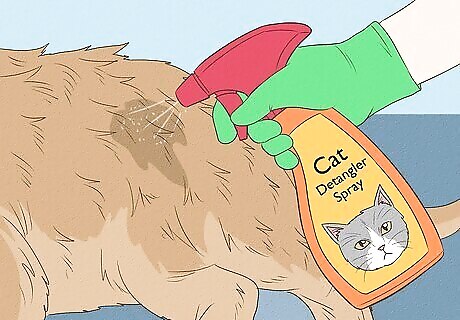
Buy a detangler spray for your cat’s fur. Adding water to the mats can actually make them worse! Instead, get a detangler that’s made specifically for cats. Spritz a bit of this onto the mats. The product may help loosen up the hair. You can buy pet detangler spray at your local pet supply store or online. Don’t buy a detangler meant for humans and use that on your cat.
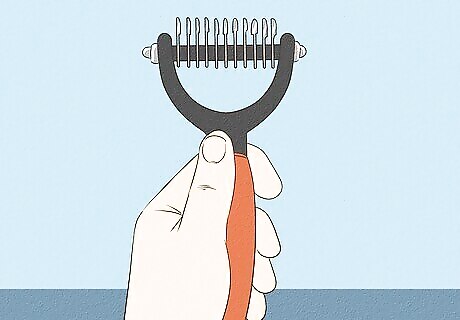
Use a dematting or wide-toothed comb. It’s best to buy a comb that’s designed to get mats out of pets’ coats. You can also try using a metal comb that has a fair bit of space between each of the teeth. These tools give you the best shot of detangling the mats without hurting your poor kitty. Dematting combs use sharp razor blades to more easily cut through matted fur and should be available online or at your local pet supply store. These should only be used on matted areas, as the blade may cause thin or bald patches on normal fur.
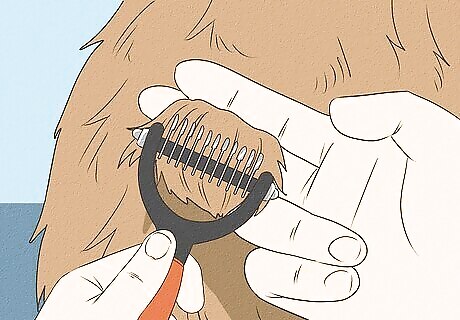
Hold the base of the mat in your fingers. Just like when your own hair is tangled, brushing can hurt! To minimize the pulling, hold the mat in one hand while you comb with the other.
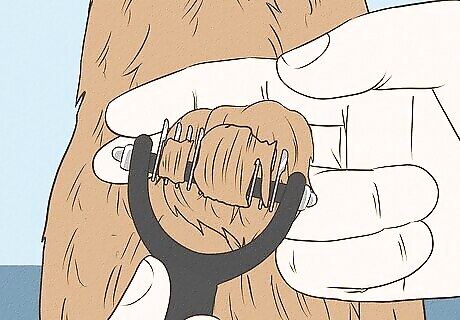
Start at the end of the mat and work your way back. Use the wide-toothed comb to gently attempt to work out the mat. Make small, downward strokes. Once you’ve detangled a small section at the bottom, move up just a tad and work out the next part of the tangle.
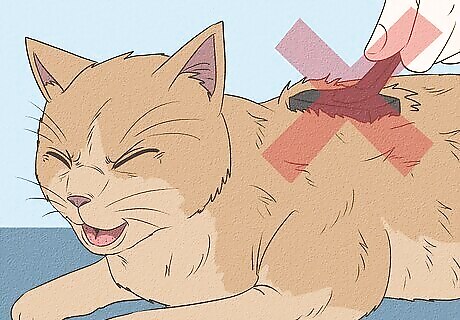
Avoid pulling at your cat’s skin. If you notice that your combing is making your cat’s skin move quite a bit, you probably need to use clippers. Listen to your cat’s sounds, as well. While it may hiss or spit if it’s upset, a screech or cry could indicate that you’re hurting it. If your cat expresses discomfort or anger at being groomed, stop and give it a break. Wait a few hours before trying again or before moving onto shaving.
Using Clippers on the Mats
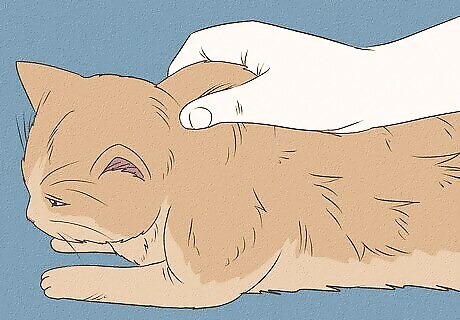
Grab your cat’s scruff gently. Put your cat on a stable, flat surface. Make sure your cat is as calm as possible by speaking to it in soothing tones. Take the loose skin at the back of your cat’s neck in your hand and tighten your grip. Your hand should be close to the ears, and the ears should move back slightly when you close your hand. This grip should help prevent your cat from biting or scratching you while you clip it. You should not lift your cat by the scruff to clip it.

Clip with the fur. Turn on the clippers and move them in the same direction that your cat’s fur lies. Do not use pressure. Just lightly graze the clippers along your cat’s coat to remove the matted fur.
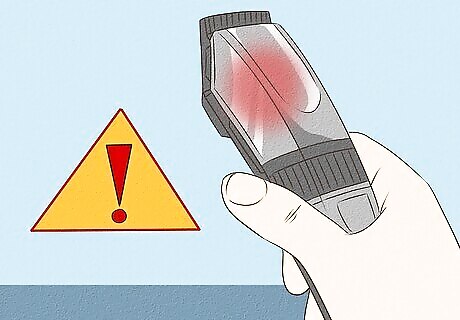
Check the temperature of the clippers frequently. Clippers heat up fast, and you don’t want the blade to burn your cat. Every minute or so, turn off the clippers and put your hand on the blade. If it’s too hot for you, it’s definitely too hot for your cat! Wait until the clippers cool down before starting them up again. You can also use clipper oil or spray to keep the blades cool. Just spray the blades and then wipe them dry both before you start clipping and whenever you feel the blades begin to heat up.
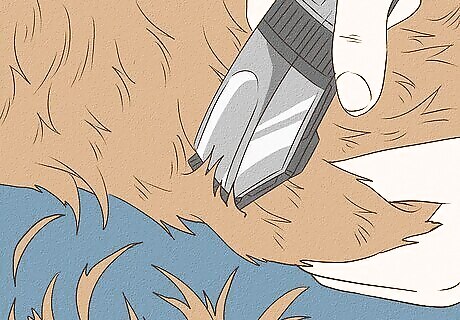
Shave without going all the way down to the skin. You only need to shave off the mats. As soon as you see fur that looks untangled enough that you could comb through it, stop shaving. This will keep you from accidentally injuring your cat with the clippers. Once you’ve shaved off the worst of the matting, stop and attempt to comb out your cat’s coat again. If the mats are severe enough, they may stick to your cat’s skin. If this is the case, it’s best to bring your cat to the vet. They can give your cat the close shave it needs without hurting it.
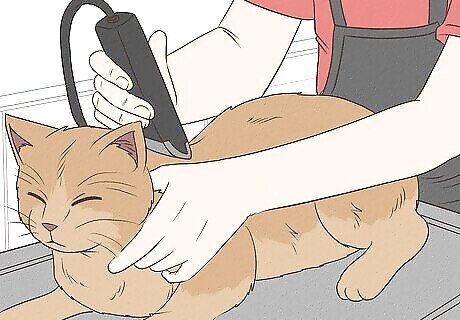
Consider visiting a professional to shave off the mats. If you’ve never shaved your cat before or if your cat attacks when you try to shave it, call your vet. They may ask you to bring your cat into their office to be shaved. They might also tell you to visit a professional groomer. Both vets and groomers have been trained to shave cats, and they’ll be able to do it without injuring your furry friend. This will be a more expensive option than doing it yourself, but it’s also the safest choice for your pet. If the cat becomes upset, angry, or aggressive during shaving, the vet can sedate it to safely shave off the mats.
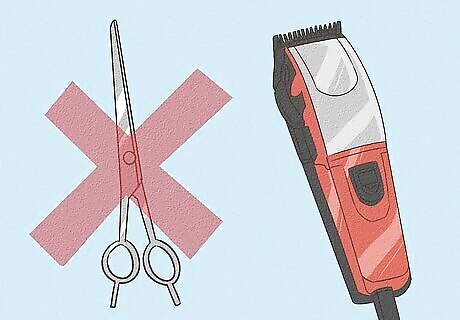
Do not use scissors to cut out the mats. Vets frequently see cats who are injured because their owners used scissors to clip them. If you don’t already have a pair of pet clippers, go out and buy some. Choose electric clippers made specifically for pets. You can buy pet clippers online or at your local pet supply store. While clippers with lots of features can get pretty pricey, you should be able to find a basic clipper for about $30 USD.
Preventing Future Matting
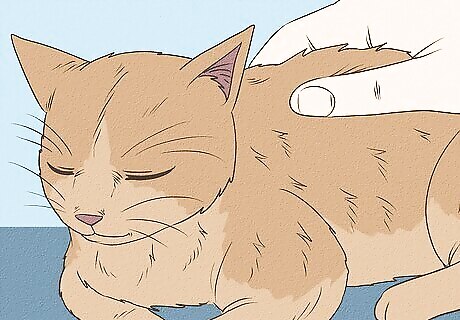
Check your cat’s coat regularly. At least once or twice per week, run your hand over your cat’s coat. Look for any clumps of fur that your cat couldn’t work out during grooming. This will also give you a chance to check for other signs of health problems, including lumps or bumps on its skin. Lumps and bumps could indicate that your cat has a small injury, abscess, tumor, or parasitic infestation. The earlier you catch these problems, the better!
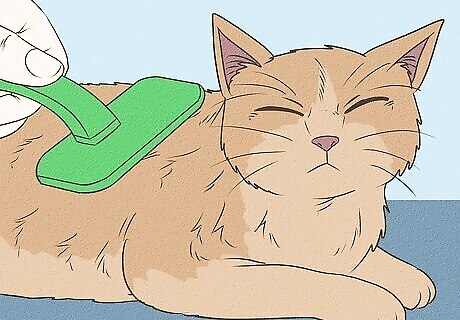
Brush your cat’s fur frequently. Matting can affect both longhaired and shorthaired cats, and it’s important that all cats get frequent grooming from their owners! If you have a longhaired cat, brush it at least once and possibly twice per day. Brush your shorthaired cat one to three times per week. Brush with the direction of the fur. Use a comb that’s specifically made for your type of cat. Longhaired cats, for example, need a comb with longer teeth that can reach into their deep fur coats.
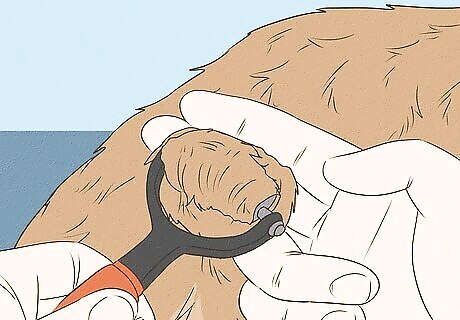
Brush out small mats as soon as you find them. If you’re checking your cat weekly, you should find mats before they get so bad that they’ll need to be clipped off. Don’t wait for them to get worse! You don’t want to have to clip your cat again.
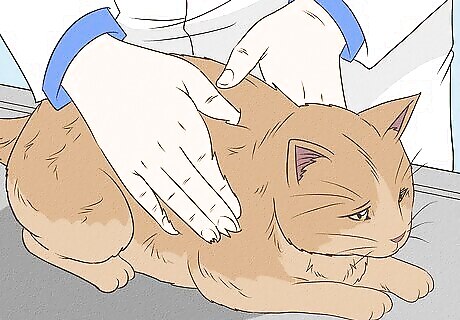
Visit the vet regularly to make sure you’re grooming properly. Always bring your cat in for an annual checkup. Tell your vet about your normal grooming routine and ask them how your cat’s coat looks. They’ll tell you if you need to brush more frequently or use a different comb.




















Comments
0 comment